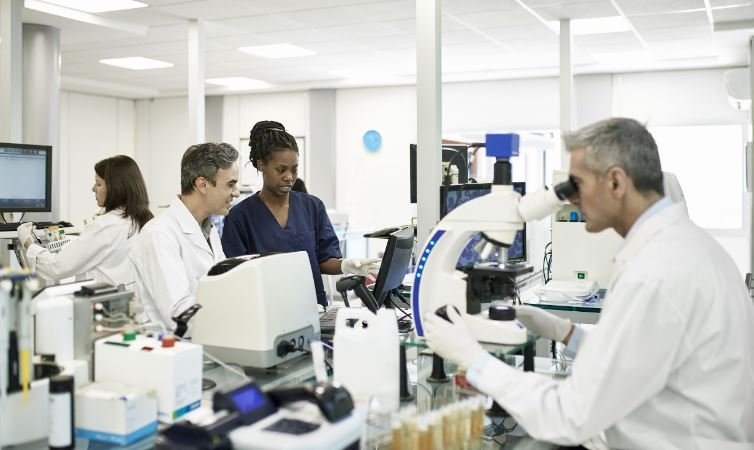Early detection is a key factor in successfully treating cancer. Regular screenings help identify cancer before symptoms appear, offering a greater chance of effective treatment and improved survival rates. Understanding the importance of these screenings and adhering to recommended schedules can make a significant difference in managing and overcoming cancer.

What Are Cancer Screenings?
Cancer screenings are tests performed to detect cancer before symptoms arise. The goal is to identify the disease in its earliest stages when it is most treatable. Screenings are often recommended based on age, gender, family history, and other risk factors. Common types of cancer screenings include mammograms for breast cancer, Pap smears for cervical cancer, colonoscopies for colorectal cancer, and PSA tests for prostate cancer.
Why Regular Screenings Are Crucial
Early Detection Improves Treatment Outcomes
Cancer detected at an early stage is generally easier to treat and often requires less aggressive treatment. Early-stage cancers are typically localized and have not spread to other parts of the body, which improves the likelihood of successful treatment and recovery. For example, early detection of breast cancer through regular mammograms can lead to less invasive treatment options and a higher survival rate.
Screening Can Identify Cancer Before Symptoms Appear
Many cancers do not show symptoms until they are advanced. Regular screenings can detect cancer before it progresses to a symptomatic stage. For instance, colorectal cancer screening through colonoscopy can identify precancerous polyps, allowing for their removal before they develop into cancer. Early detection through screening can prevent the progression of the disease and reduce the need for extensive treatments.
Regular Screenings Reduce Mortality Rates
Studies have shown that regular cancer screenings are associated with a decrease in cancer-related mortality. For example, routine cervical cancer screenings (Pap smears) have significantly reduced the incidence and mortality of cervical cancer. Similarly, regular mammograms have been shown to lower breast cancer mortality rates by detecting tumors early when they are more treatable.
Screening Helps in Personalized Treatment Plans
Early detection of cancer allows healthcare providers to develop personalized treatment plans tailored to the specific characteristics of the cancer and the patient’s overall health. Personalized treatments are more effective and can lead to better outcomes. For instance, identifying specific genetic markers or mutations through screenings can guide targeted therapies that address the unique aspects of the cancer.
Screenings Can Identify High-Risk Individuals
Certain screenings can identify individuals at high risk for developing cancer due to genetic factors or family history. For example, genetic testing for BRCA1 and BRCA2 mutations can help identify women at increased risk for breast and ovarian cancers. Early identification of high-risk individuals allows for preventive measures, such as increased surveillance or prophylactic surgeries, to reduce cancer risk.
Recommended Screening Guidelines
Screening guidelines vary based on cancer type, age, gender, and risk factors. Here are some general recommendations:
- Breast Cancer: Women should start having mammograms at age 40, with annual screenings recommended for those at higher risk. The frequency of screening may vary based on individual risk factors and guidelines from organizations such as the American Cancer Society (ACS).
- Cervical Cancer: Women should begin Pap smears at age 21 and continue every three years until age 29. From ages 30 to 65, screenings can be done every five years with a Pap smear and HPV (human papillomavirus) test or every three years with a Pap smear alone.
- Colorectal Cancer: Screening for colorectal cancer should begin at age 45 for average-risk individuals, with options including colonoscopy, stool tests, or flexible sigmoidoscopy. The frequency of screening depends on the type of test and risk factors.
- Prostate Cancer: Men should discuss prostate cancer screening with their healthcare provider starting at age 50, or earlier if they have a family history or other risk factors. The decision to undergo screening is often based on individual preferences and risk assessment.
Overcoming Barriers to Screening
Several factors can prevent individuals from participating in regular cancer screenings, including:
- Lack of Awareness: Many people are not aware of the recommended screening guidelines or their importance. Increasing public awareness through education and outreach can help address this barrier.
- Financial Constraints: The cost of screenings can be a barrier for some individuals. Health insurance coverage and financial assistance programs can help alleviate this issue. It’s important to explore available resources and support.
- Fear and Anxiety: Fear of diagnosis or anxiety about the screening process can deter individuals from getting screened. Providing emotional support, counseling, and clear information about the screening process can help reduce these fears.
Conclusion
Regular cancer screenings are essential for early detection and effective treatment, significantly improving outcomes and survival rates. By adhering to recommended screening guidelines and overcoming barriers to participation, individuals can enhance their chances of detecting cancer at an early stage, leading to more successful treatment and better overall health. Prioritizing regular screenings is a proactive approach to managing cancer risk and maintaining long-term well-being.




